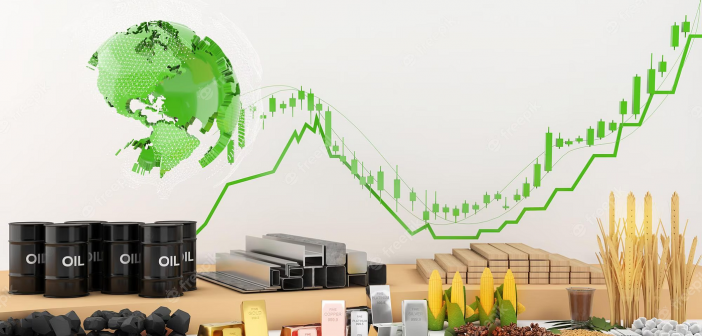The week ending August 30, 2024, brought considerable volatility to the commodities markets, reflecting a complex interplay of global economic signals and geopolitical tensions. Market participants saw significant movements across various commodities, driven by shifting supply dynamics, fluctuating demand, and macroeconomic indicators. This analysis explores the key trends, sector performances, and underlying factors that influenced the commodities markets during this period.
Energy Commodities
Crude Oil:
Crude oil markets experienced notable fluctuations, with prices reacting to a mix of geopolitical uncertainties and supply concerns. The price of Brent crude oil, a global benchmark, opened the week at $92.50 per barrel but saw substantial volatility, closing at $95.20 per barrel, marking a weekly increase of around 3%.
Performance Highlights:
- Supply Dynamics: Geopolitical tensions in key oil-producing regions, such as the Middle East, contributed to supply concerns, pushing prices higher. Additionally, OPEC+ production cuts and disruptions in key oil supply chains exacerbated the price increases.
- Demand Indicators: Despite the rise in oil prices, demand forecasts remained robust due to ongoing economic recovery in major consuming regions. However, concerns over high energy costs impacting global economic growth tempered market enthusiasm.
Natural Gas:
Natural gas prices also saw volatility, reflecting a blend of seasonal demand patterns and supply factors. The Henry Hub natural gas futures opened at $3.85 per MMBtu and closed at $4.05 per MMBtu, showing a weekly gain of about 5%.
Performance Highlights:
- Demand Fluctuations: Increased demand for natural gas for power generation during the summer months contributed to price gains. However, the market remains cautious about potential overproduction and storage levels heading into the fall.
- Supply Factors: Supply disruptions and lower-than-expected production growth influenced price movements, with market participants closely monitoring inventory levels and weather forecasts.
Precious Metals
Gold:
Gold prices exhibited mixed trends as investors navigated through economic uncertainties and inflation concerns. Gold futures started the week at $1,945 per ounce and ended at $1,955 per ounce, reflecting a modest weekly increase of approximately 0.5%.
Performance Highlights:
- Inflation Concerns: Rising inflationary pressures, coupled with geopolitical uncertainties, supported gold prices as investors sought safe-haven assets.
- Interest Rate Speculations: Market reactions to potential changes in interest rates by central banks contributed to price fluctuations, with investors weighing the impact of higher rates on gold’s appeal as a non-yielding asset.
Silver:
Silver followed a similar trajectory to gold, with prices moving within a narrow range. Silver futures opened at $24.80 per ounce and closed at $25.05 per ounce, marking a weekly gain of around 1%.
Performance Highlights:
- Industrial Demand: Silver’s dual role as both a precious metal and an industrial commodity provided some support to prices, driven by ongoing industrial demand and concerns about supply constraints.
- Market Sentiment: Silver’s performance was also influenced by broader market trends and investor sentiment, reflecting its correlation with gold prices and economic indicators.
Industrial Metals
Copper:
Copper markets saw fluctuations driven by supply chain issues and demand projections. Copper futures opened the week at $8,175 per metric ton and closed at $8,320 per metric ton, marking a weekly increase of approximately 1.8%.
Performance Highlights:
- Supply Constraints: Supply chain disruptions, particularly from major copper-producing countries, contributed to price gains. Additionally, ongoing trade tensions and logistical challenges impacted market dynamics.
- Demand Outlook: Strong demand from the construction and electronics sectors supported copper prices, although concerns about potential economic slowdowns and production increases created uncertainty.
Aluminum:
Aluminum prices experienced relative stability compared to other metals. The price of aluminum started the week at $2,275 per metric ton and ended at $2,290 per metric ton, showing a modest weekly increase of about 0.7%.
Performance Highlights:
- Supply and Demand Balance: Aluminum prices were influenced by supply-demand dynamics, including production levels and inventory data. Although the market saw steady demand, concerns over potential overproduction and regulatory impacts on the industry remained.
Market Sentiment and Outlook
The commodities markets for the week ending August 30, 2024, were marked by volatility, driven by a blend of geopolitical tensions, supply chain disruptions, and shifting demand patterns. Investors are expected to remain vigilant, monitoring macroeconomic indicators, geopolitical developments, and seasonal trends as they navigate the evolving market landscape.





